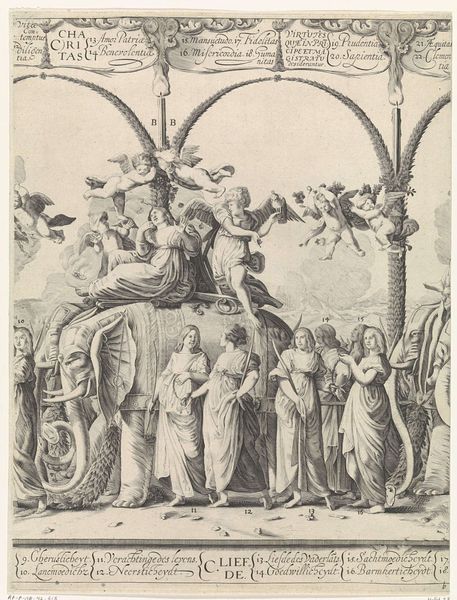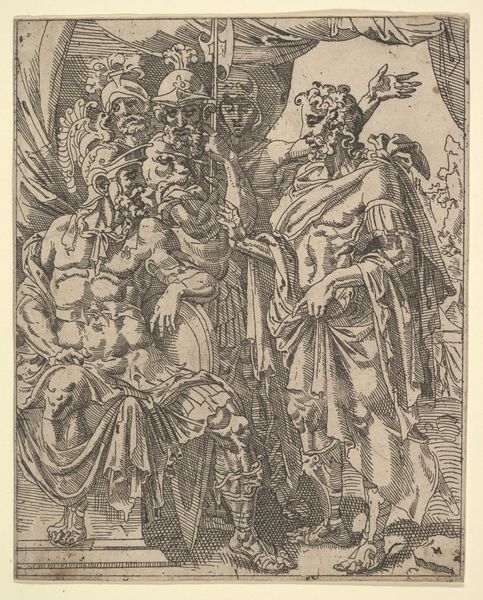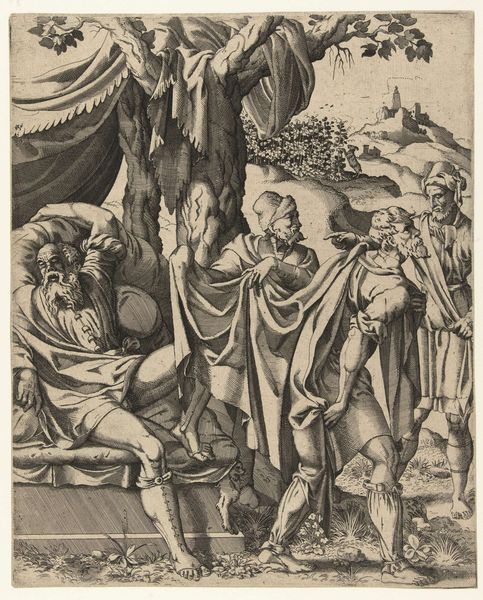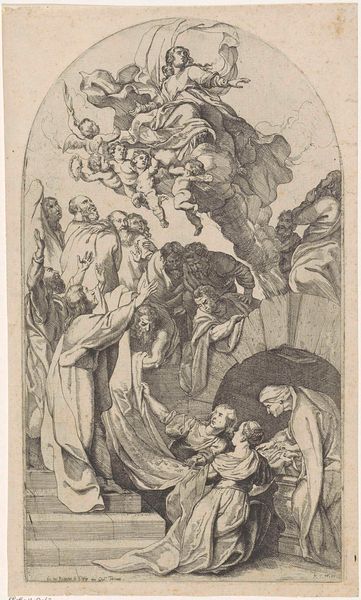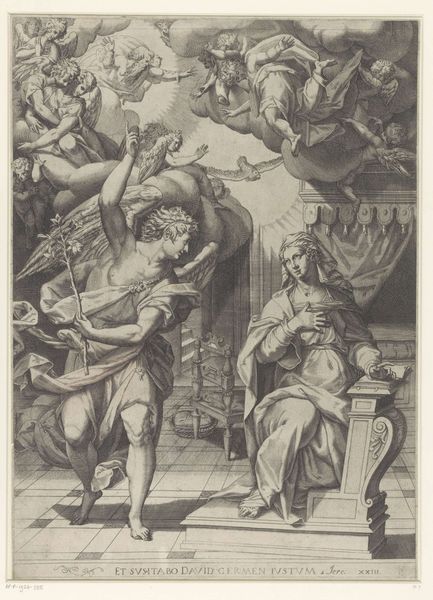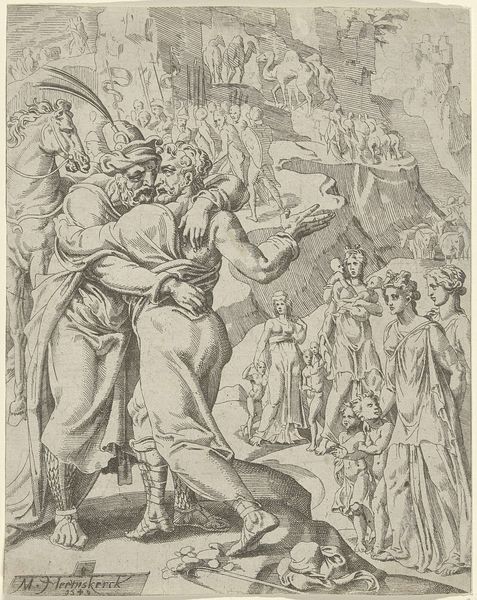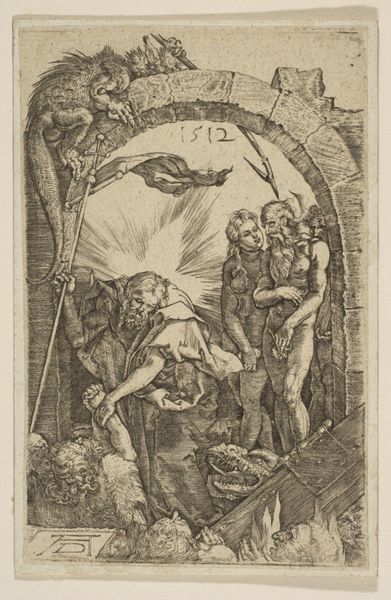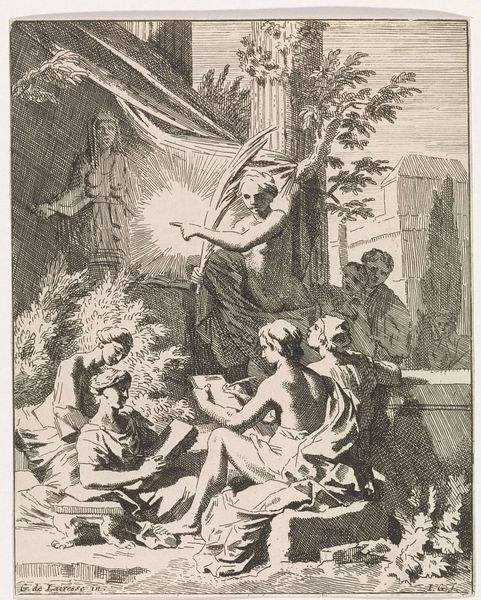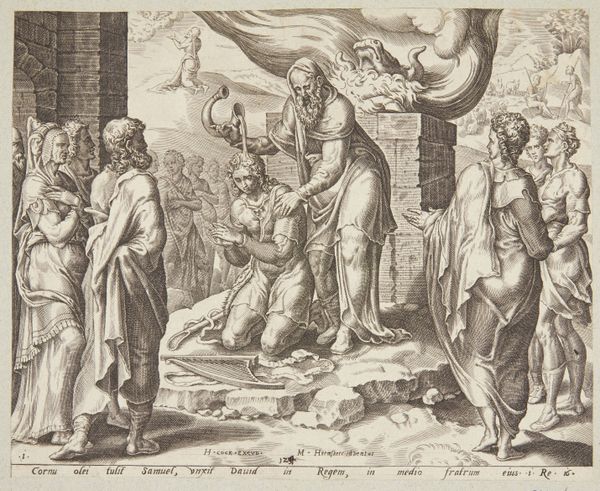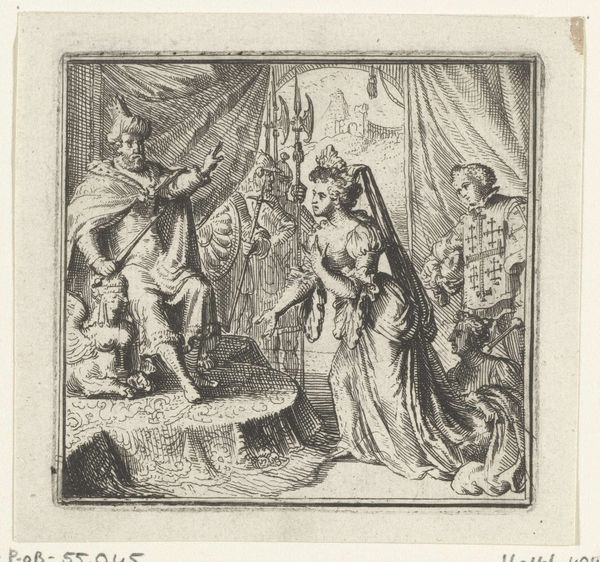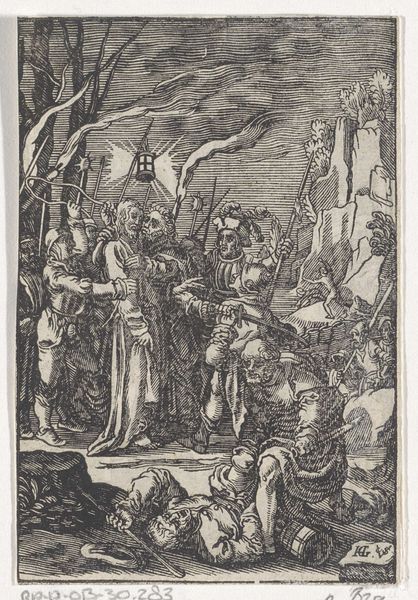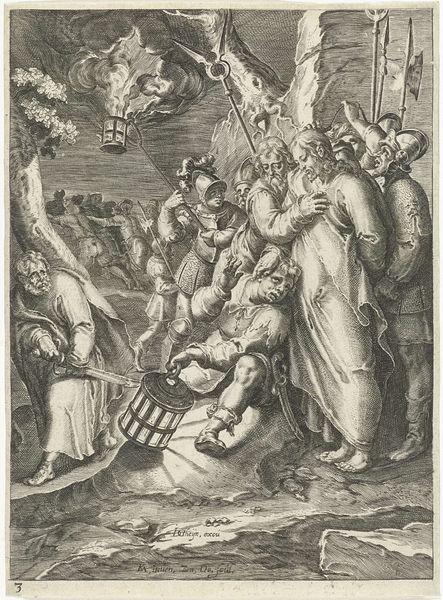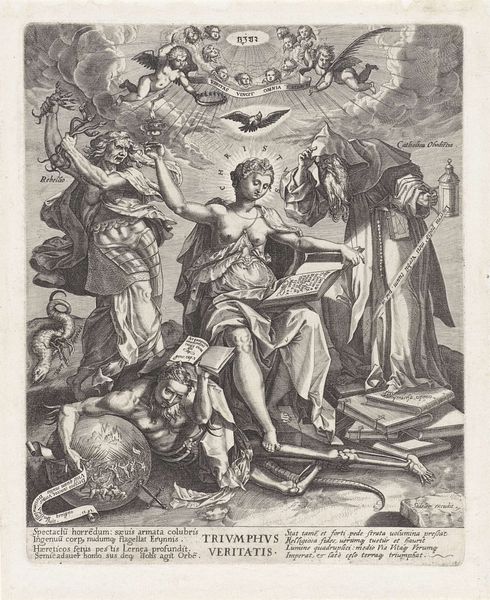
Triomftocht van Willem van Oranje, rechtsmidden 1623 - 1626
0:00
0:00
cornelisvankittensteyn
Rijksmuseum
print, engraving
#
portrait
#
allegory
#
baroque
#
pen drawing
# print
#
figuration
#
line
#
history-painting
#
engraving
Dimensions: height 357 mm, width 275 mm
Copyright: Rijks Museum: Open Domain
Editor: This engraving, "Triumph of William of Orange" made between 1623 and 1626 by Cornelis van Kittensteyn, seems packed with allegorical figures and text. It has quite an ornate, almost overwhelming feel to it. What catches your eye when you look at this work? Curator: What immediately strikes me is the very overt and deliberate construction of power through imagery. We see William of Orange elevated, literally riding high above, surrounded by allegorical figures representing virtues and accomplishments. This isn’t just a portrait; it's a carefully constructed piece of political propaganda meant to shape public perception. How do you think the average person viewing this print would have responded to such an idealized depiction? Editor: I imagine it reinforced the idea of William as a powerful and virtuous leader, but I wonder how much people questioned the idealization given the realities of the time. Were there dissenting voices? Curator: Absolutely. While these prints served to solidify William's image within certain circles, they also inadvertently provide a record of the values being promoted by the ruling class. Analyzing the visual choices, the specific virtues emphasized—prudence, justice, valor—reveals the attributes deemed most crucial for maintaining social order and justifying power at that moment in Dutch history. Editor: So it's not just about celebrating William of Orange but also about projecting and reinforcing specific social values. What about the distribution of these prints? Where would they have been seen? Curator: They would have circulated among the educated elite, government officials, and those with the means to acquire them. Consider how this controlled dissemination reinforces a specific narrative and limits broader public discourse on leadership. The museum's role is crucial; placing the piece alongside works offering differing viewpoints helps us foster informed interpretations. Editor: That makes me rethink the power of the image itself. It’s not just about what’s depicted but how and where it’s shown. I see this print in a new way now! Curator: Exactly! By looking at it through a historical lens, and focusing on the socio-political context, we uncover layers of meaning that aren't immediately apparent. It prompts us to critically examine the intentions behind visual representations of power and how they shape our understanding of history.
Comments
No comments
Be the first to comment and join the conversation on the ultimate creative platform.
